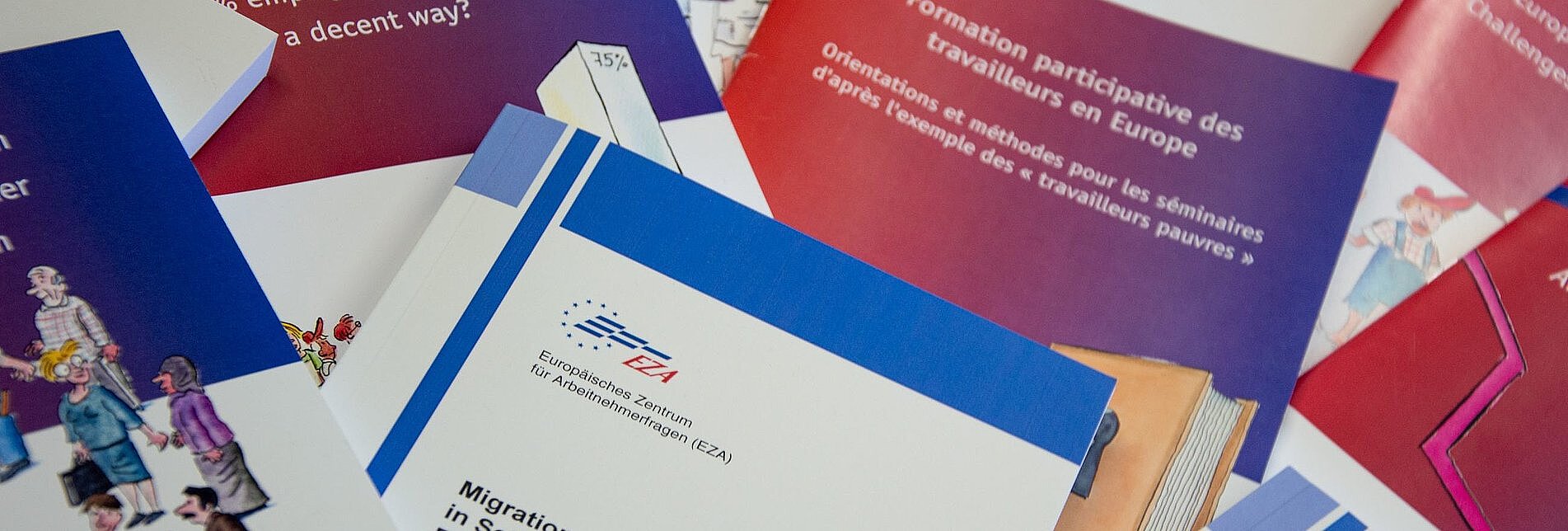A seminar on “Digitalisation: a tool to spread workers' rights and reach vulnerable groups” organised by USO – CCFAS (Unión Sindical Obrera – Confederal Center for Training and Social Action) was held in Valencia, Spain Social) from 17-19 October 2023, in cooperation with EZA and funded by the European Union.
There are two sides to digitalisation. One is negative: the loss of personal connections, excessive connectivity, risks to privacy, mental stress and work overload and the threat of dehumanised artificial intelligence that threatens millions of jobs and even our own society.
However, digitalisation, which has been given a boost notably since the Covid-19 pandemic, also has a friendly and useful aspect for human beings: greater access to training through webinars and other e-learning techniques, a more efficient channel for sharing information through applications and messaging, savings in terms of time and money, and it has facilitated teleworking, which brings improvements to the work-life balance and a demographic redistribution in less populated areas.
Collective bargaining, social dialogue and union and social pressure will be key to the redistribution of the wealth created by the new technological revolution of AI to compensate for this more negative side, which will also establish the rules governing the indiscriminate implementation of digitalisation to ensure mental health care and prevention at work, the elimination of the harmful effects of hyper-connection and information overload and the opposition to it when, in addition to information overload, it becomes disinformation and endangers even our democratic systems.
However, unions and other organisations that seek to improve the lives of workers can also use the best aspects of digitalisation to disseminate our work and to spread information on labour rights to those who would be difficult to reach in person.
In this case, the challenge is to find a suitable channel; one among the many existing channels and social networks, with a new one emerging practically every year. If we choose one channel over another, this may only result in leaving us disconnected from entire generations. Adapting to new and existing social networks and speaking the language of the average person is therefore essential both to disseminate labour rights effectively and for the very survival of our organisations. Other groups or people may have engaged in social media first to fill a gap that, by nature, should be filled by unions and other organisations that promote worker advocacy.
However, social organisations that work directly with vulnerable groups consider that there is one more obstacle to add to the dangers of digitalisation: the benefits are not enjoyed by the entire population owing to the still wide digital divide.
This occurs depending on gender, and women experience the adverse effects more, depending on where they live, not to mention the rural environment both in terms of education, training, the ineffectiveness of the networks and income. This is a perverse situation, to the extent that lower-income groups are unable to access the government assistance provided to them, because aid can only be managed via complex electronic systems.
Belgium and the Spanish rural area have demonstrated schemes to us that improve the digital skills of the most vulnerable groups. These are aid packages that should however be implemented directly or indirectly by the government itself, but their lack of action is taken up by non-profit organisations.
The relationships between citizens and the government in Spain have been used as examples, with all the advantages and obstacles they entail. It is now clear that, similar to other countries, the digital divide is leaving a large group of the population, the most vulnerable, those who are not capable of entering the digital sphere, out of basic social services. How do we punish the government when it does not fulfil its duty? This is a question to which there is still no clear answer: it simply highlights the problems.
And what happens if an entire country is vulnerable? How can digitalisation help? In the case of the bloody invasion of Ukraine, where basic infrastructure is under constant threat every day, it is essential to maintain Internet networks. For example, they enable more efficient and agile procedures when dealing with internally displaced persons, although many areas still require digitisation; e.g. health records that make it easier to identify absence due to sickness and illness in times as challenging as during a war.
In Europe more generally, there is still a large digital divide, quite separate from the unique situation in Ukraine. In the world of work, digital training is not only essential for daily working life, but also for a reintegration into employment: acquiring the skills that new jobs demand through continuous training.
And will all jobs be digital? No, digitalisation has not yet replaced many professions, although it is anticipated that 300 million jobs will have been automated over the next few years. However, we can still choose between being manual or digital workers and, the consensus is that the perfect point will be the balance between digital and analogue. All of the above takes into account that, in digitalisation, progress no longer exists,
because AI will not replace people, but the people who use AI will replace those who do not. The people first. We must ensure that, particularly from a union perspective, the digital transformation is a transition and not an abrupt change and that the transition is smooth. We must also prevent AI from driving social dialogue, and ensure that it doesn’t make collective bargaining even more precarious or threaten to replace humans in the control of machines. We must find original solutions if we wish to achieve all this.
Our challenge today is therefore to conduct continuous training for our young people and our children, because they are learning subjects that do not yet exist, that are constantly evolving;
indeed, 6 out of 10 school-aged children will work in professions that do not yet exist. Are we prepared to confront this future?

